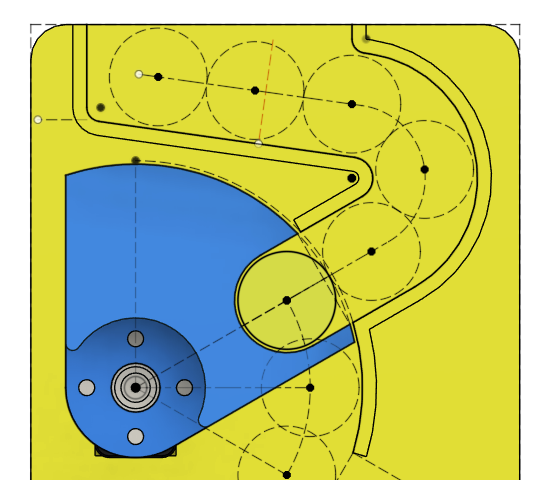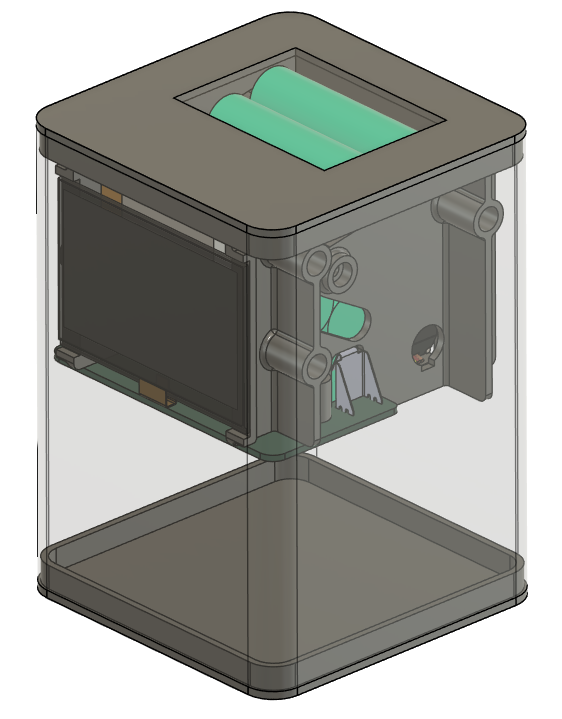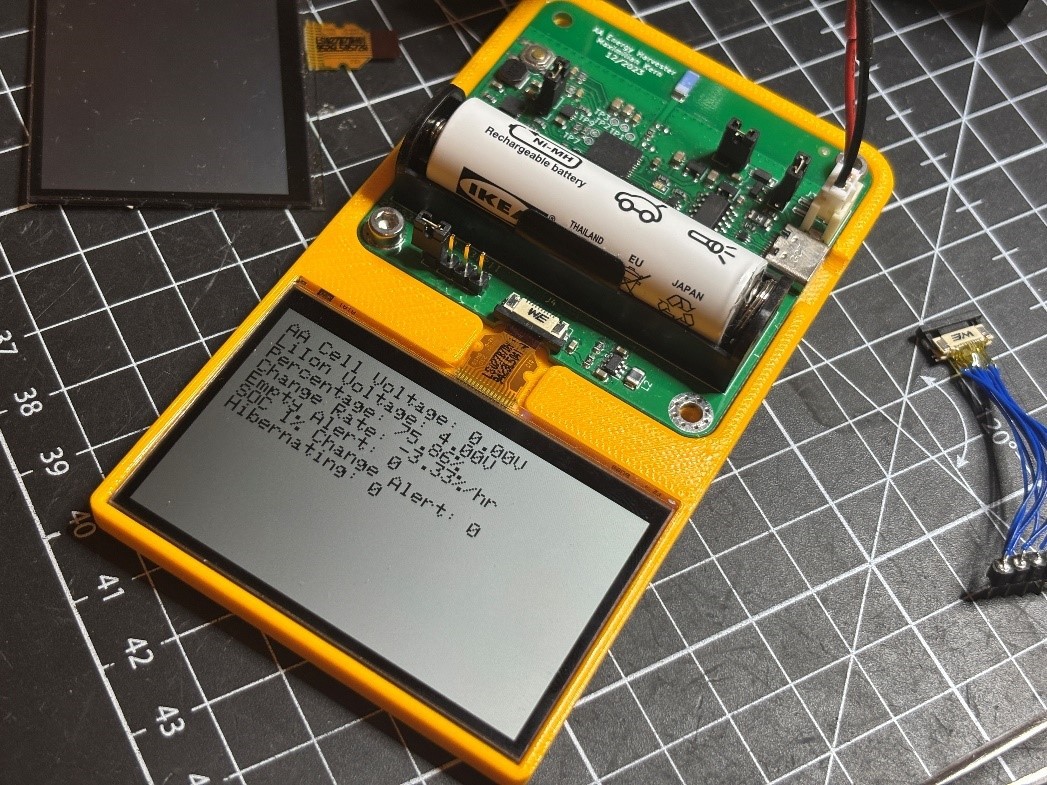This project did not start out as a battery charger right away. My initial plan was actually quite the opposite. Instead of charging batteries, I wanted to make use of the remaining charge in dead alkaline cells.
If you are like me, you probably have a box somewhere with discarded alkaline cells. Battery-powered devices like toys and remotes typically operate between 1V and 1.5V. Some devices are less efficient, so batteries might be discarded with some charge remaining. Instead of just throwing these cells into a box, I wanted to build a device that tries to utilize the remaining charge. Basically, a smart storage box that can also power a clock with depleted cells, before they are recycled. To process multiple cells, this device would require a mechanism to feed the cells in, make electrical contact, and finally eject them. A small rechargeable battery or supercapacitor would be used to bridge the time when no battery is inside the mechanism. And to charge this buffer battery, the device would need to step up the alkaline battery voltage to a more usable 3.3V or more.

The first step was figuring out a simple and compact mechanism for loading and unloading the batteries. I came up with an approach that uses only a single motor. First the batteries are stored in an angled chute. This way, gravity can feed the batteries into the mechanism. A servo motor drives an arm that can move the battery between three positions: In its upper position, the arm connects with the chute and allows a battery to roll into it. Once the battery is inside the arm, it can move to its middle position, pushing the battery into spring terminals. After the battery is fully discharged, the arm moves to its lower position where the battery is free to drop out of the arm into a collection bin. The downside to this approach is that the batteries need to be of the same size. But supporting both AA and AAA cells would increase complexity and size by a lot.

I 3D-printed a proof-of-concept to test the mechanism. This worked out very well, so I already planned a more sophisticated design. One of my early ideas was to make a device that resembled the Power Mac G4 with its transparent shell. The front would display a simple clock, while the transparent sides would show off the inner workings of the mechanism.

While working on the mechanical design, I had already ordered a PCB to test the electronics. It contained a BQ25504 energy-harvesting IC that can use voltages as low as 600mV to charge a small Lithium-Ion battery. This battery was powering the servo motor as well as a Sharp memory-in-pixel display and an ESP32. While the basic concept worked, I soon found a problem: Out of my collection of old batteries, most of them were so empty that the voltage collapsed entirely, even when charging the Li-Ion battery at the slowest possible rate. The batteries that did not collapse seemed to be well over 1.2V and barely used at all.

It appears that most battery-powered devices are in fact pretty efficient and use most of the energy in a cell. There is a very interesting blog post that shows how batteries behave when discharged at different rates:
https://lygte-info.dk/info/batteryEnergyAtLowVoltage%20UK.html
Even when using cells with enough remaining energy could power my device, I had become unsure about my goal with this project. Powering a simple clock with half-empty AA batteries did not seem too exciting. Also, the internal buffer battery could power the clock for months or years without needing to be recharged. And while the mechanism seemed interesting, it would only ever move when a battery is switched for a new one, which could take weeks. Disappointed, I put the project on hold.
A few weeks later I stumbled upon a Kickstarter campaign by Olight. They had built a battery charger that in many aspects resembled my prototype. The Olight Ostation X has a battery storage on top, where empty rechargeable batteries are dropped in. They are automatically fed into charging terminals in the middle of the device and when full, dropped to the bottom. The device uses the same concept as my energy harvester, only charging instead of discharging the cells. Obviously, Olight did not copy me since I had not published any of my work yet. But the successful Kickstarter campaign showed me that this idea still had potential. I decided to make a battery charger myself, using my existing mechanism. It would be different from the Ostation in a few aspects: By only charging one battery at a time instead of 4, my device could become much smaller (also less practical, to be honest). And like the original harvester, it would have a second use as a desk clock.
 Max.K
Max.K
Discussions
Become a Hackaday.io Member
Create an account to leave a comment. Already have an account? Log In.